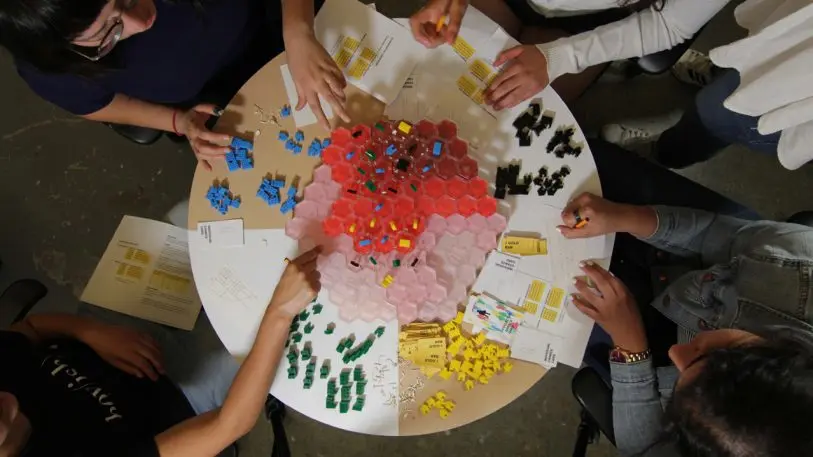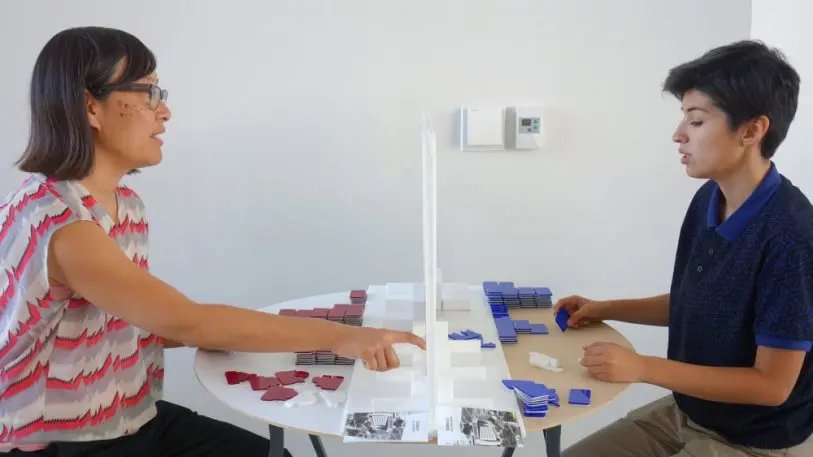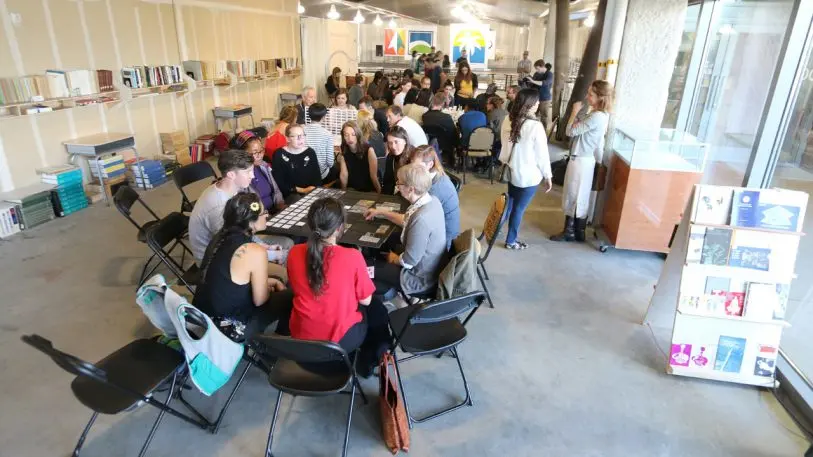Janette Kim started designing board games about climate change after working on scenario planning with her architecture students at Colombia University–and seeing that the typical process, which architects and many cities use to make decisions, was fairly boring. Board games brought the scenarios to life. “They’re great at mixing together a lot of complexity and making that visible,” says Kim, who now teaches at California College of the Arts and leads the Urban Works Agency, a research lab at the school that looks at the use of architectural design on social justice issues, sustainability, and economic resilience in cities. A series of the games developed by Kim and her students, called Win-Win, is now in an exhibit at Yerba Buena Center for the Arts in San Francisco.

In a Monopoly-like game called The Other 99%, each player is a real estate developer, but one player starts with three times more money than the others–and as sea level rises, they can afford to build on higher ground. The other players have more votes; every other round, everyone discusses whether to build a levy and who will pay for it. “You basically see how risk associated with your properties influences your decision-making and your tendency to either seek short-term profit or long-term profit,” she says.
In Bartertown, a game that imagines a world without money, players trade favors and share resources to deal with the impacts of climate change. The game was commissioned by The Bay Area Conservation and Development Commission for use in public meetings and with agency partners; the commission wanted to explore the idea of social resilience. Each player starts out in a different part of the Bay with different everyday activities to accomplish, and then has to start collaborating with other players when things go wrong–say, you have to get to work, but flooding has taken out your commute, so you have to make a trade with another player to stay at their home, closer to your office. “You start to see how people’s lives entwine with each other,” Kim says.

Delirious D.C. looks at the challenge of relocating buildings because of sea level rise. One player represents the federal government, which has many buildings in risky floodplains in D.C., and the other represents local citizens in the city. The local player might want to build housing or create parks; the federal player might want to relocate the FBI or the Smithsonian. Each tries to build up as much territory as they can while blocking the other player, and can earn extra points by convincing the other player that new combined institutions–like the F.B.I.R.S.–make sense as a new way to make use of limited space.


Kim is now working with an independent game producer to bring the In It Together game to market, and plans to launch a Kickstarter campaign. Games like this can be used both for planning and to help people think differently about the complexity of climate action, she says. “I think a lot of times when we talk about climate change, we have a tendency to talk about it as a question of should we act because we care enough about it, or should we keep about our daily lives?” she says. “What I really enjoy about the both the competitive and cooperative nature of games is that it recognizes that people just come from different perspectives and they have many different reasons for either thinking short-term or long-term, or valuing landscape or profit or property or equity–there are so many different value systems that are really enmeshed within climate change.”
Recognize your brand’s excellence by applying to this year’s Brands That Matter Awards before the early-rate deadline, May 3.







